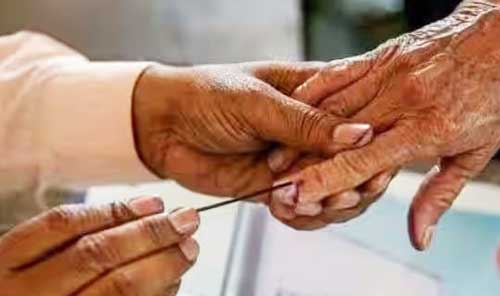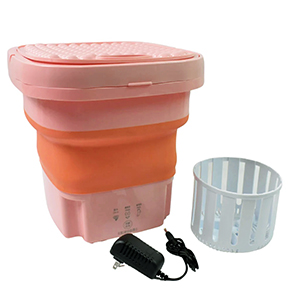The term "Simultaneous Elections" would broadly mean structuring the Indian election cycle in a manner that elections to Lok Sabha and State Assemblies are synchronised together. In such a scenario, a voter would normally cast his/her vote for electing members of Lok Sabha and State Assembly on a single day and at the same time, as per a discussion paper prepared in 2017.
The authors of the paper were Bibek Debroy, member, Niti Aayog and Kishore Desai, Officer on Special Duty, Niti Aayog in 2017.
The concept of simultaneous elections is in-fact not new to the country. Post adoption of the Constitution, elections to Lok Sabha and all State Legislative Assemblies were held simultaneously over the period 1951 till 1967 when the cycle of synchronized elections got disrupted, the note said.
In the current situation, the country witnesses elections to about 5-7 State Assemblies every year (except few exceptional years). Such a situation ends up adversely impacting all the key stakeholders - the Government (both Union and the State Governments), government employees/officials on election duty, general electors/voters, as well as political parties and candidates, the paper said.
The key adverse impacts that the existing electoral cycle leads to include impact on development programs and governance due to imposition of Model Code of Conduct by the Election Commission, frequent elections lead to massive expenditures by Government and other stakeholders; Engagement of security forces for significantly prolonged periods.
Any adult individual in India would normally cast his vote to elect members of Lok Sabha, State Assembly and the third tier every five years as and when the respective terms of these institutions are about to expire, the paper said.
Ideally, simultaneous elections should imply that elections to all the three tiers of constitutional institutions take place in a synchronised and co-ordinated fashion. What this effectively means is that a voter casts his vote for electing members for all tiers of the Government on a single day.
Having said that, the third-tier institutions is primarily a State subject as per the Constitution. Further, considering the facts that elections to the third tier institutions are directed and controlled by the State Election Commissions and their sheer numbers in the country is significantly large, it would be impractical and possibly impossible to synchronize and align election schedules to the third tier with that of Lok Sabha and State Assembly elections, the paper said.
Accordingly, for the purposes of this note, the term "Simultaneous Elections" is defined as structuring the Indian election cycle in a manner that elections to Lok Sabha and State Assemblies are synchronised together. In such a scenario, a voter would normally cast his/her vote for electing members of Lok Sabha and State Assembly on a single day and at the same time.
To clarify further, simultaneous elections do not mean that voting across the country for Lok Sabha and State Assemblies needs to happen on a single day. This can be conducted in a phase-wise manner as per the existing practice provided voters in a particular constituency vote for both State Assembly and Lok Sabha the same day, the paper said.
There are many compelling reasons in favor of simultaneous elections. Suspension of development programs, welfare activities due to frequent imposition of Model Code of Conduct, massive expenditures by Government and various stakeholders on frequent elections, black money, engagement of Government personnel and security forces for a prolonged period of time, perpetuation of caste, religion and communal issues etc.
Out of all these, the impact of frequent elections on governance and policy making is perhaps the most significant, the paper said.
Frequent elections force Governments and political parties to remain in perpetual “campaigning” mode thereby impacting the focus of policy making. Short-sighted populist and “politically safe” measures are accorded higher priority over “difficult” structural reforms which may more beneficial to the public from a longer term perspective. This leads to sub-optimal governance and adversely impacts the design and delivery of public policies and developmental measures.






Agartala MBB Airport gets new domestic air cargo terminal
The state transport minister Sushanta Chowdhury on Monday inaugurated the domestic air cargo terminal here at Agartala MBB Airport and said that the airport will soon receive the tag of international airport.
Court sentences four Bihar residents to 10 years RI
Six years after four persons from Bihar were detained for smuggling 29.5 kg of cannabis from Agartala in the Humsafar Express, the Additional Sessions Judge Court, Dharmanagar, North District of Tripura, on Monday convicted them and sentenced them to ten years of rigorous imprisonment.
Pradyot calls for respect to traditional heads amid temple land dispute
Tipra Motha Party founder and royal scion, Pradyot Kishore Manikya Debbarma, has urged the government to acknowledge and respect the authority of Samajpatis (traditional heads) and Chantai (priests) in matters concerning temple development projects.
29 Bangladeshi nationals, seven touts held in Tripura
The Border Security Force (BSF), Tripura, has enhanced vigil and intensified its domination along the international border and detained 29 Bangladeshi nationals and seven Indian touts in last four days.
J.P. Nadda holds meeting with Tripura BJP leaders; discusses party-related issues
Bharatiya Janata Party (BJP) national president J.P. Nadda on Sunday held an important meeting with Tripura's state unit leaders including Chief Minister Manik Saha and discussed various party affairs.
One body recovered from Telangana tunnel on day 16 of rescue operation
Rescue workers on Sunday - the 16th day of the operation - pulled out the body of one of the eight missing persons from the partially collapsed SLBC tunnel in Telangana’s Nagarkurnool district after the cadaver dogs from Kerala identified the spot for presence of human remains under the rubble.
FM says GST rates to be reduced further, rationalised; Congress demands overhaul
Union Finance Minister Nirmala Sitharaman has said that Goods and Services Tax (GST) rates will be reduced further as the process of rationalising tax slabs is nearing completion.
'Anti-incumbency is an issue of the past now': J.P. Nadda hails PM Modi's leadership in Tripura rally
Bharatiya Janata Party (BJP) national president J.P. Nadda on Sunday said that the political culture in India has changed after Narendra Modi became Prime Minister, adding that people earlier used to talk about the anti-incumbency factor against the government.